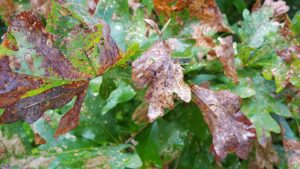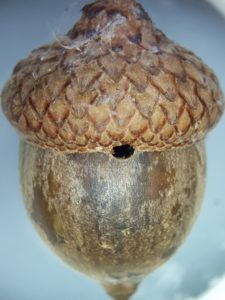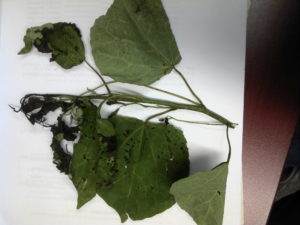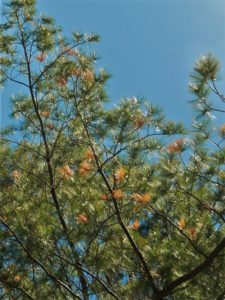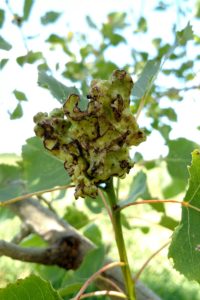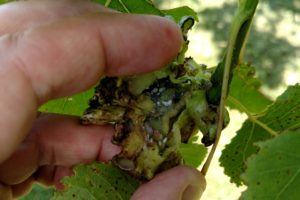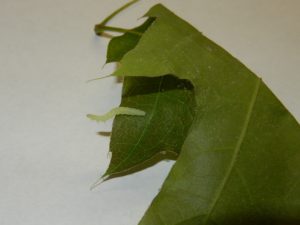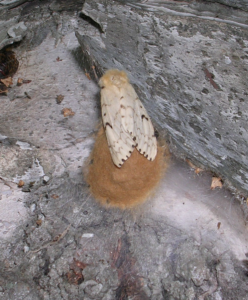
These spikey aphids, marked with blotches of brown and tan, are maple aphids.
As I wandered through the woods one day in September, I noticed some spots on a sugar maple leaf. When I flipped it over, I discovered tiny black dots on the underside. They looked like tiny flea beetles to the naked eye (they were very tiny), but I didn’t know of any flea beetles on maple. After putting them under the microscope, I discovered that my tiny bugs weren’t beetles at all, they were maple aphids! They are tiny, dark, and spiky! Cute little suckers! They weren’t doing any significant damage to the leaves that I could tell, although all the leaves in that area had at least a few aphids on the underside. I’ll watch this area next year to see if I can find them again.
Written by: Linda Williams, forest health specialist, Woodruff, (Linda.Williams@wisconsin.gov), 715-356-5211 x232.


